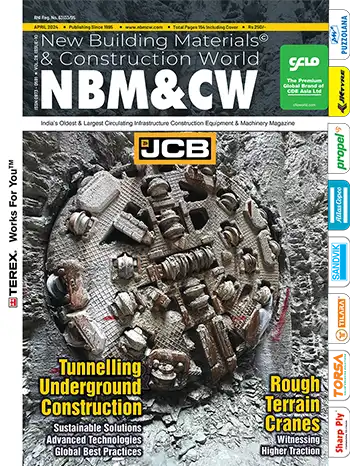Polymers blend for repair applications (Epoxy resins & polymers)
Studies on Polymer Blend for Repair Applications
Rajni Lakhani, Principal Scientist & Priyanka Tomar, Research Intern Organic Building Materials Division, CSIR-Central Building Research Institute, Roorkee.
Introduction
Epoxy resins are widely used as highly cross linked materials in various repair applications where special performances such as good mechanical, thermal and electrical properties are required. However, the incorporation of thermoplastic polymers into epoxy resins has been widely recognized as an alternative to rubber toughening to improve upon the brittleness of epoxy resin, without significant decrease of desirable properties such as high glass transition, modulus and chemical resistance. [1-3] Sultan et al [4] were the first to show that the fracture toughness of epoxies can be improved by the introduction of a dispersed rubber phase.Accordingly a number of studies[5-9] were reported concerning the application of liquid rubbers. These liquid rubber modifiers are initially miscible with epoxy resin but phase separation takes place upon curing. Hence the rubber morphology and consequently the final mechanical properties of the blend are determined by this chemically induced phase separation process and may lead to several morphological types such as particulate bicontinuous and phase inverted. The relation between the improvement of the fracture toughness and the curing conditions of the rubber particle size and concentration used was extensively studied. Moreover, a wide range of deformation mechanism was proposed in order to explain the observed improvement in toughness.[10]
Based upon these analyses various routes were explored to circumvent the drawback of rubber modification, viz. the reduction in the stiffness and strength. The resulting morphology proved to be the most important parameters that influence the toughness enhancement. Most of the reported rubber toughened epoxy formulations suffer from the problem of heat cure. Heat curing is difficult and impractical for fabrication of certain structures and requires significant amounts of energy.
Acrylate based liquid rubber can be a substitute for butadiene based rubber for toughening of epoxy resin because of its comparatively better oxidative property and thermal stability.
This article presents a study of styrene-acrylate modified epoxy system. In order to study the effect of styrene acrylate copolymer modification, various formulations have been prepared incorporating different ratio of copolymer ranging from 0.33-1.0 in epoxy resin. All the formulations have been evaluated with respect to their mechanical, morphological and thermal properties to analyze the structure property relationship.
This is a premium article available exclusively for our subscribers.
If you are already a subscriber, please Login
If not, subscribe now and get access to well researched articles & reports on infrastructure construction, equipment & machinery, innovations & technology, project reports, case studies, and more. All this by simply paying just ₹200/- for a month of complete portal access, or a discounted rate of ₹1000/- for a full year of access.
NBM&CW February 2014


















